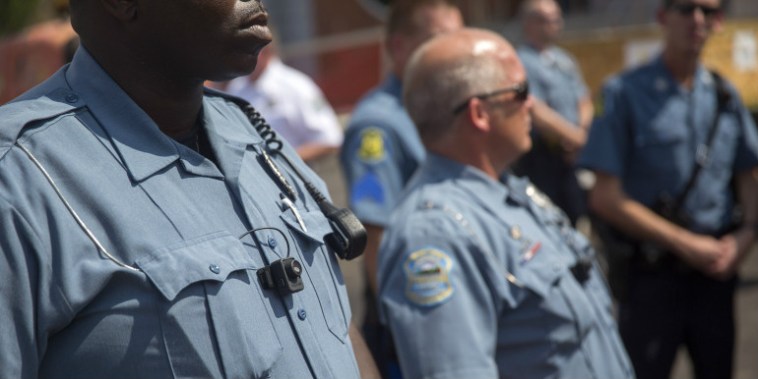The tragic deaths of Michael Brown and Eric Garner have highlighted the racial gap between some police departments and the communities they serve. For example, the population of Ferguson, Missouri, where Michael Brown lived, is about 67 percent black, and yet there are only three or four blacks on Ferguson’s 53-person police force.
Videos By Rare
One proposed solution is to help police departments become more racially reflective of their communities. It’s a reasonable suggestion, but it may be difficult to achieve.
Racial police force disparities are a local issue, not a national one. The U.S. Bureau of Labor Statistics claims there were 697,000 police and patrol officers in 2013. Of that number, 14.2 percent were black, 15.3 percent were Hispanic, and 2.4 percent were Asian.
Those percentages closely mirror the U.S. population. Blacks make up 13.2 percent of the U.S. population and Hispanics are 17.1 percent.
So while there may be racial disparities between some police departments and the communities they serve, that’s not indicative of a nationwide disparity.
Those charged with recruiting officers claim they are doing their best to attract more minorities. National Public Radio quoted St. Louis County police officer Erich von Almen: “We can’t get more black officers. We recruit predominantly at black schools, the military, and for the life of me I don’t know why. It’s not the best-paying job; they’d probably do better in the private sector. That’s all I can think of. But I know it’s not for the lack of trying.”
With respect to Ferguson, a St. Louis news station quoted the city’s mayor, James Knowles, as saying, “We hire everyone that we can get. There’s also the problem that a lot of young African American people don’t want to go into law enforcement. They already have this disconnect with law enforcement, so if we find people who want to go into law enforcement who are African American we’re all over it because we want them to help us bridge the gap.”
The Miami-Dade Police Department has been successful in increasing its black and especially Hispanic representation, according to the Associated Press, but it took years. Even Cedric Alexander, president of the National Organization of Black Law Enforcement Executives, says expanding minority representation will take “patience and time.”
In other words, the suggestion of just attracting more minorities to law enforcement in majority-minority communities may be harder than it appears.
Since minority police officer representation reflects the U.S. population, a disproportionately large number of whites on one police force likely means a disproportionately large number of blacks or Hispanics at another police department. Fortunately, no one seems to think that’s a problem. Nor should we move to a quota system, where each racial segment of the population has to be matched by an equal percentage in the police department.
There may be ways to use incentives to encourage minorities to work for law enforcement in minority-majority communities. Some departments are going outside of the continental U.S., for example, to Puerto Rico.
There also might be lessons from a program that places doctors in “medically underserved areas” (i.e., when there’s too few doctors, often in rural communities). So medical school scholarships are provided to those who agree to practice in a medically underserved area for a fixed period of time.
Could the state or local government, or some private foundation, provide financial help during police officer training, or even a bonus, to encourage minorities to join law enforcement in a minority-majority community?
Finding a way to increase minority police force representation in minority-majority communities is a worthy goal, just be aware that it may be much harder to do than proponents realize.

